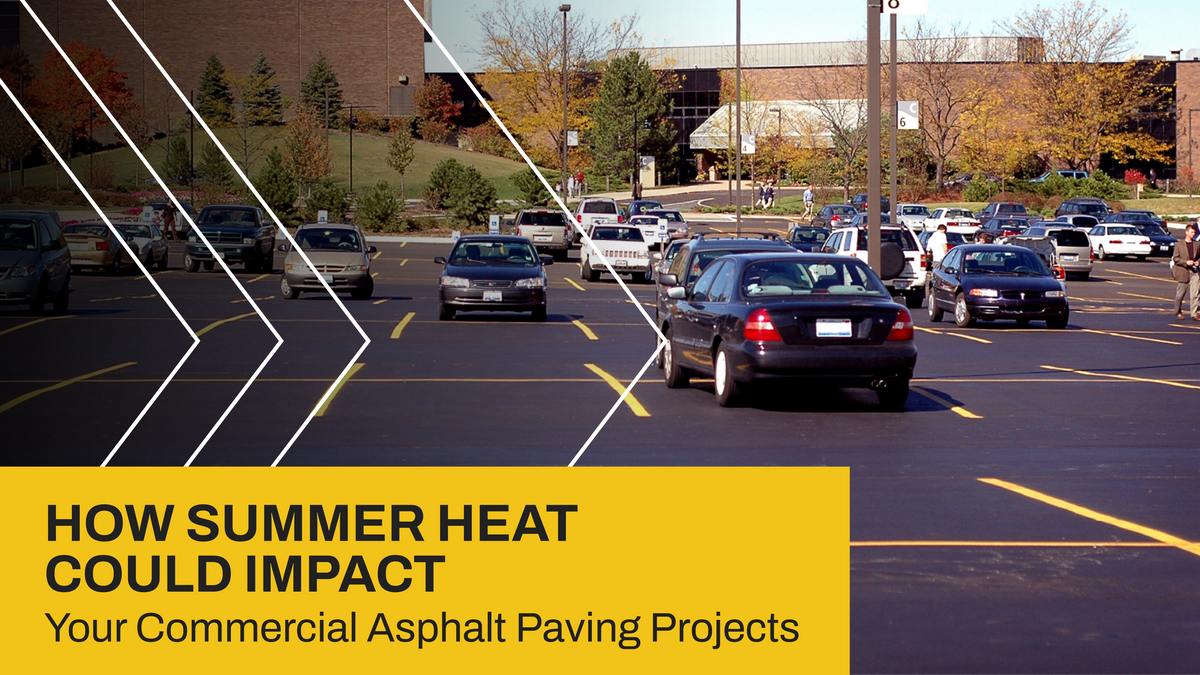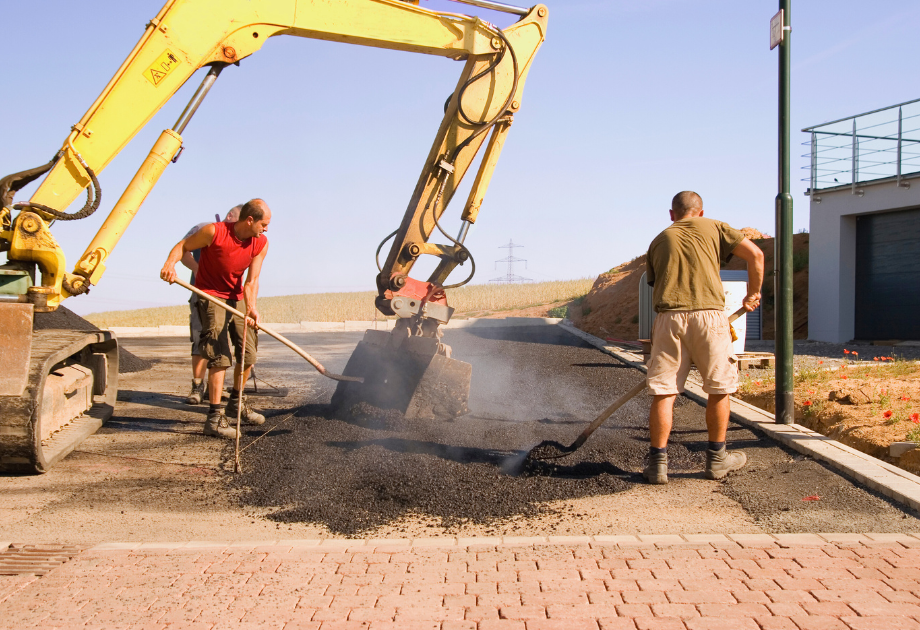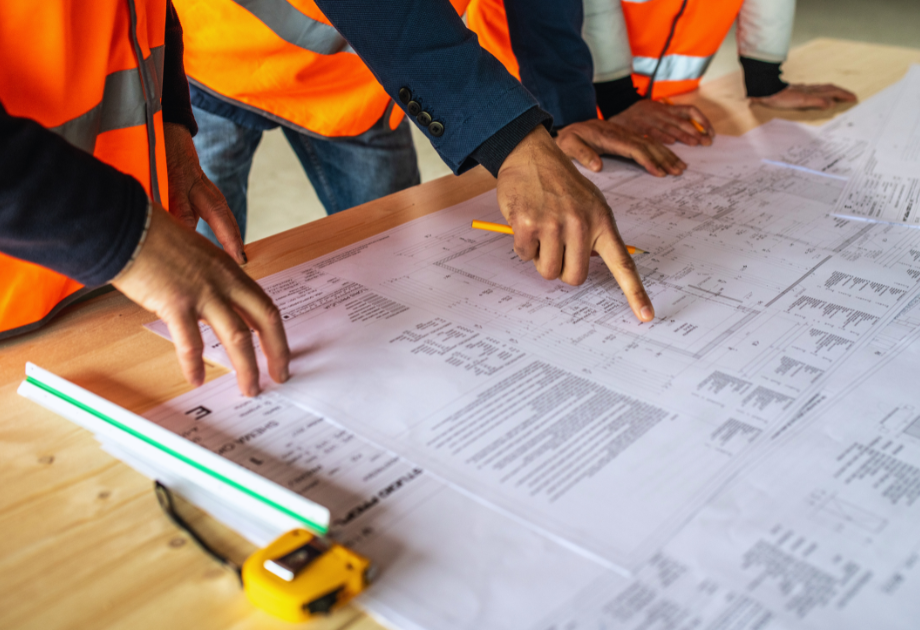How Summer Heat Could Impact Your Commercial Asphalt Paving Projects
How Summer Heat Could Impact Your Commercial Asphalt Paving Projects

For commercial property managers, summer often feels like the obvious time to tackle paving work. Weather conditions seem favorable, business schedules can be adjusted, and it’s the season most contractors recommend. But extreme heat brings its own set of challenges—and without the right approach, it can compromise the outcome of your project.
At JK Meurer, we’ve completed thousands of commercial paving jobs through every season. We understand how heat affects asphalt performance and project logistics, and we plan every summer job around that reality. This guide outlines what property managers should know about working with asphalt in the heat—and how our team helps avoid delays, damage, and downtime.

How Heat Affects Asphalt: What Property Managers Need to Know
Asphalt doesn’t behave the same in 90°F weather as it does in spring or fall. High heat softens the material quickly, making it more difficult to compact and more vulnerable to surface damage.
During peak summer, asphalt temperature often exceeds 150°F—much higher than the surrounding air. That can lead to issues like:
- Surface rutting from foot or vehicle traffic before the pavement has cured (24-48 hours, depending on surface and weather conditions.)
- Delayed curing, which keeps surfaces softer for longer
- Premature wear, especially in high-traffic commercial areas
These effects are amplified in areas like Cincinnati, where urban surfaces absorb and retain more heat than surrounding green spaces. If projects aren’t timed and managed properly, the result can be pavement that underperforms long before its expected lifespan. That’s why relying on a paving partner that has seen it all over several decades, like us at JK Meurer Paving, can make all the difference in your summer project.
Why Surface Temperatures Matter More Than Air Temperature
Many people plan asphalt work based on air temperature alone. But what happens on the ground is what really matters. On a sunny day, the pavement can be 50 degrees hotter than the air. That impacts how to lay asphalt correctly and how long crews have to work with it before it cools too quickly—or becomes unworkable.
Without that timing precision, the final product can suffer. That’s why we monitor surface conditions in real time, not just rely on forecasts.
Humidity and UV Can Speed Up Surface Damage
Heat isn’t the only issue. Humidity slows down evaporation during curing, and constant UV exposure breaks down surface oils in the asphalt mix. The result? Fatigued pavement that looks worn far earlier than expected and may require patching or sealing.
We often hear questions about what temperature is good for sealcoating or when not to seal a lot. These are valid concerns. Heat exposure doesn’t just affect the day asphalt is installed—it continues to influence how pavement ages over time. That’s why we select materials appropriate for summer conditions and use crews who understand how weather affects both installation and surface preservation.

Timing Isn’t Just About Weather—It’s About Logistics
Summer paving success depends just as much on smart scheduling as it does on the weather. Commercial sites often have tenants, deliveries, and peak activity windows that limit work hours. In summer, those limitations tighten further due to extreme mid-day heat.
At JK Meurer, we work with property managers to schedule projects around:
- Early morning and late evening install windows
- Phased projects that allow partial access to lots and roads
- Forecasts and on-site monitoring to prevent mid-project delays
That strategy helps reduce downtime and avoid quality issues caused by rushing installs in unsafe conditions.
Plan Early, Avoid Emergencies Later
The best time to plan your summer paving project is early in the season—ideally late spring through early summer. When asphalt has time to cure before peak temperatures hit, surface performance improves and long-term durability increases.
Waiting too long often leads to emergency patching or mid-season repairs, which are more expensive, harder to schedule, and more disruptive to your operations. Projects that are rushed or poorly timed also carry a higher risk of ending up with surfaces that never cure properly—leading to customer complaints, extra maintenance, or early replacement.
Request a Quote now to lock in your timeline while peak dates are still available.
How JK Meurer Plans for Summer Conditions
Paving in the heat doesn’t have to mean cutting corners. With decades of experience and a commercial-first approach, our crews know how to complete projects that hold up through the hottest weeks of the year.
Our summer paving strategy includes:
- Materials built for heat: We select asphalt formulations designed to resist softening and rutting under high temperatures. These blends are chosen based on project demands, traffic loads, and expected exposure.
- Experienced crews on-site: Our teams are trained to measure asphalt temperature, assess humidity, and make real-time decisions that protect the final result.
- Consultative planning: Every job starts with a tailored approach based on your site’s access needs, usage patterns, and weather conditions.
You’re not left guessing—our team handles the technical details so your project stays on track and your pavement lasts.
Learn more about our commercial services and how we approach projects across Cincinnati and the surrounding region.
Keep Your Summer Project on Track with JK Meurer
Paving in hot weather brings unique challenges—but they’re completely manageable with the right partner. At JK Meurer, we take the stress out of summer planning by handling timing, materials, and crew logistics with the experience that comes from decades of commercial work.
If you’re preparing for a summer paving project, now is the time to act. Our calendar fills quickly, and early planning prevents costly delays and rework.
Schedule your project today to build a plan that works—for your site, your schedule, and your budget.
Still have questions? Our FAQ page covers everything from drying times to pavement care.

